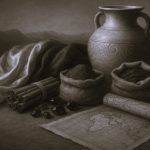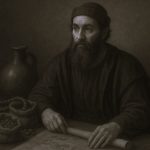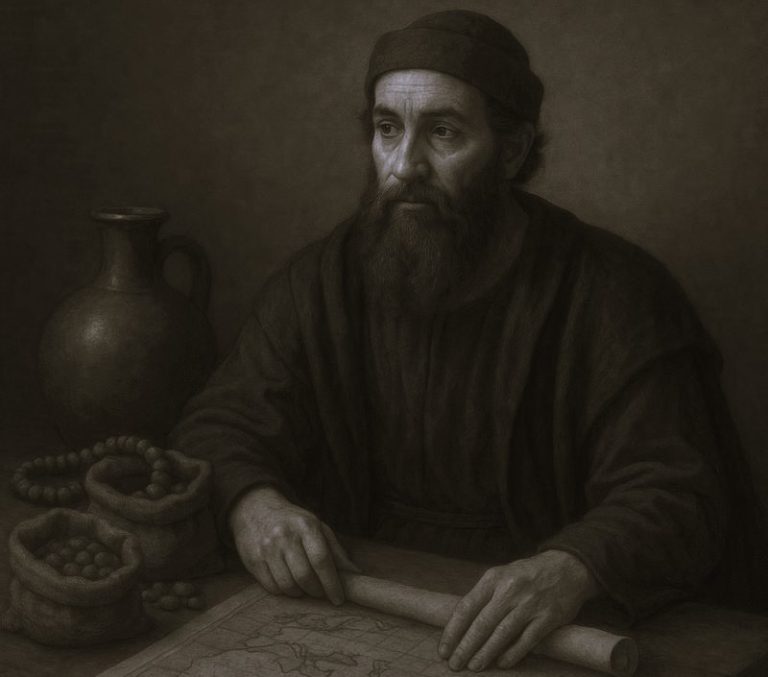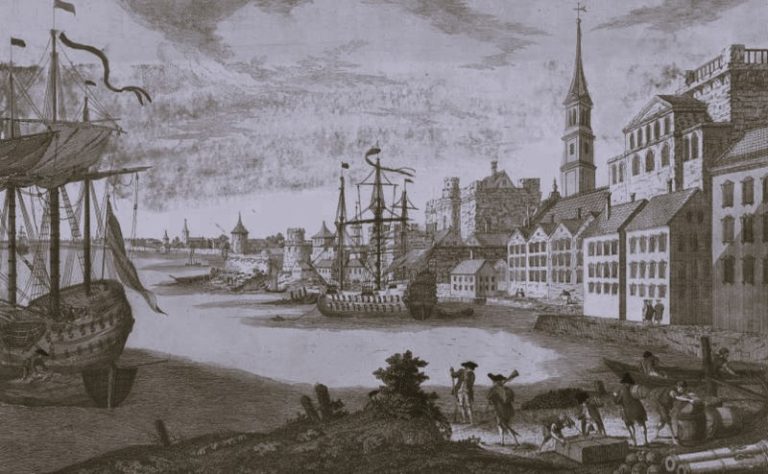

Originally published by Newberry Digital Collections for the Classroom, 08.29.2017, Newberry Library, republished with permission for educational, non-commercial purposes.
Introduction
How did the Civil War transform the daily lives of people who lived hundreds of miles from the front lines? Most of the battles of the Civil War occurred either in border states or south of the Mason-Dixon line. As a result, civilians in border states and in the South encountered the Union and Confederate Armies themselves and witnessed the military conflict firsthand. Civilians in the North and West may not have had such direct experience of battle, yet many nevertheless found their daily lives transformed. Families sent soldiers and nurses to the southern battlefields. Northern women and men worked to provide the Union troops with necessities and comforts—clothes, bandages, ammunition, food. They mourned the dead—more than 360,000 men from the North alone—and they received the surviving veterans, many severely wounded, who made their way back home.
Beyond the demands of the war effort, Northerners experienced the Civil War from a distance in historically unprecedented ways. Historian Adam Goodheart notes that changes in printing practices meant that, for the first time, “Americans did not simply read the news—they saw the news.” This had not been the case for previous generations. People who lived during the American Revolution had to wait weeks or even months for news of the war, which arrived by word of mouth or in the cramped columns of local newspapers. But by the mid-nineteenth century, the North had a flourishing periodical press that not only delivered news faster, it illustrated the news in pictures. Weekly periodicals, such as Frank Leslie’s Illustrated Newspaper and Harper’s Weekly, began printing large, woodcut illustrations in the years just before the Civil War and had circulations in the hundreds of thousands. The papers hired artists, such as Winslow Homer, to travel near the front lines and portray soldiers’ experiences on the battlefields and in Union military camps.
Periodical illustrations made up one part of a rich visual culture related to the war that developed in the North in the 1860s. The period is often referred to as the coming of age of photography. Photographs could not yet be effectively reproduced in large numbers, yet they had a profound cultural influence through the portrait studios that thrived in towns and cities throughout the North. Photographers such as Matthew Brady exhibited their works in galleries, introducing Northern audiences to devastating images of corpse-strewn battlefields. While some artists embraced the new standard of realism set by photography, others developed a strong, symbolic language to spur patriotic feeling. Both respected painters, such as Frederic Edwin Church, and popular illustrators, whose work appeared on sheet music and stationery, invested images of the U.S. flag with a new significance.
The following collection of documents brings together a wide range of images from sources both popular and highbrow in order to explore how visual culture shaped the meaning and experience of the Civil War home front.
The War Illustrated

These illustrations are drawn from the popular, New York–based weeklies Frank Leslie’s Illustrated Newspaper (above) and Harper’s Weekly and suggest some of the ways these publications pictured the war for their readers. The first portrays the bombardment of Fort Sumter and was originally published on April 20, 1861, less than a week after the event itself.
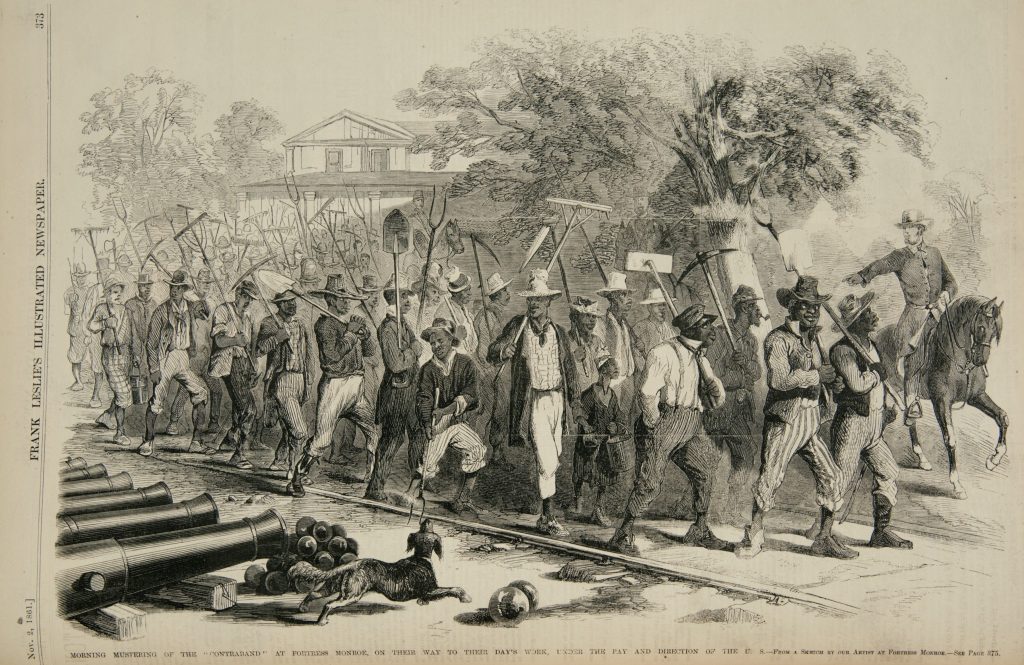
This spectacular representation of the outbreak of war contrasts with the seemingly mundane illustration that follows of the “Morning Mustering of the ‘Contraband’ at Fortress Monroe” (above). The term contraband refers to former slaves who had escaped into the protection of Union forces. If mustering normally suggests the routine activity of soldiers, in this case, it evokes radical social change—the prospect of freeing slaves more than a year before the Emancipation Proclamation was issued. (For more information, see The Contraband.)

“News from the War” (above) presents a series of vignettes that depict the importance of wartime communication both to soldiers at war and to their families at home. The artist, Winslow Homer, went on to become one of the most-celebrated American painters of the nineteenth century. But he began as a commercial printmaker and, in October 1861, had been hired by Harper’s Weekly to serve as an artist-correspondent in Virginia.


The final image above is of the Myriopticon, a miniature panorama produced by toy manufacturer Milton Bradley shortly after the war ended. The Myriopticon was a shoe-box-sized theater. It presented the history of the “Rebellion” on a scroll of 22 hand-colored illustrations copied from Harper’s and mounted on spindles in a cardboard box. A presenter could turn a crank to move the scroll from scene to scene, while reading from an accompanying script. The toy was so popular in some areas that neighbors would gather in the owner’s house to watch the show over and over. One child begged Bradley to sell more of the devices, so “as to make it less crowded in our parlor.”
The Home at War

These two works by Winslow Homer suggest—directly and indirectly—some of the ways that the war changed the lives of civilians in the North. The 1861 cover of Harper’s (above) shows men, on the bottom half of the page, filling paper cartridges with gunpowder. Women, on the top half, insert the bullets. The work was dangerous; in spaces full of live ammunition, the smallest spark could trigger a catastrophic explosion.

Women in the North had worked in factories for decades, but the war greatly increased the necessity and the opportunity for women to take on wage labor outside the home. Homer’s 1864 painting On Guard (above) portrays a boy watching over his family’s fields in his father’s absence, evoking changes to children’s lives as a result of the war.
The Iconography of Patriotism

The sources below are all quite different and provide a sense of the popularity of images of the U.S. flag in the Civil War North. Renowned landscape painter Frederic Edwin Church created Our Banner in the Sky (above) in response to the Confederate attack on Fort Sumter. The painting, on one level, exemplifies the allegorical and abstract approach to the war taken by members of the Hudson River school, at the time America’s most prominent fine arts movement. However, as the images that follow suggest, Church’s painting was one of many representations of the flag produced in the North during the war. Indeed, a New York publishing firm bought the copyright to Church’s painting, reproduced it as a lithograph, and sold numerous copies.

In this context, Church’s work does not seem entirely different from the mass-produced flag images that follow. “Capture of the Heights of Fredericksburg” (above) was one of many illustrations to feature a tattered U.S. flag waving triumphantly over the scene of a battle.

In a time before recorded music, sheet music, such as The Bonnie Flag (above), was another popular source for the ubiquitous icon.


Finally, the flag appears in a more intimate context: the stationery (above) on which a Union soldier, George Deal, wrote to his wife, Sarah. His photographic portrait appears later in this collection.
War Photography

In the 1860s, photography was still a challenging medium, especially for reportage: the equipment was heavy and bulky, subjects had to be perfectly still when the camera’s shutter snapped, and processing images required mixing dangerous chemicals by hand. Yet photographers such as Matthew Brady and Timothy O’Sullivan ventured into the field to make the Civil War the first war to be extensively documented through photographs. The stark realism of corpse-strewn fields shown in photographs such as the one below seemed to many viewers to capture the particular brutality of this war. Although photographs were still too difficult to reproduce to be used in mass circulation newspapers or magazines, people found innovative ways to exploit the medium’s realism. The stereograph shown above presents two copies of the same photograph, slightly offset, which creates the effect of a three-dimensional image when seen through a handheld viewer. It portrays the aftermath of fighting in Gettysburg in 1863, one of the bloodiest battles of the war and the site of a major Union victory.
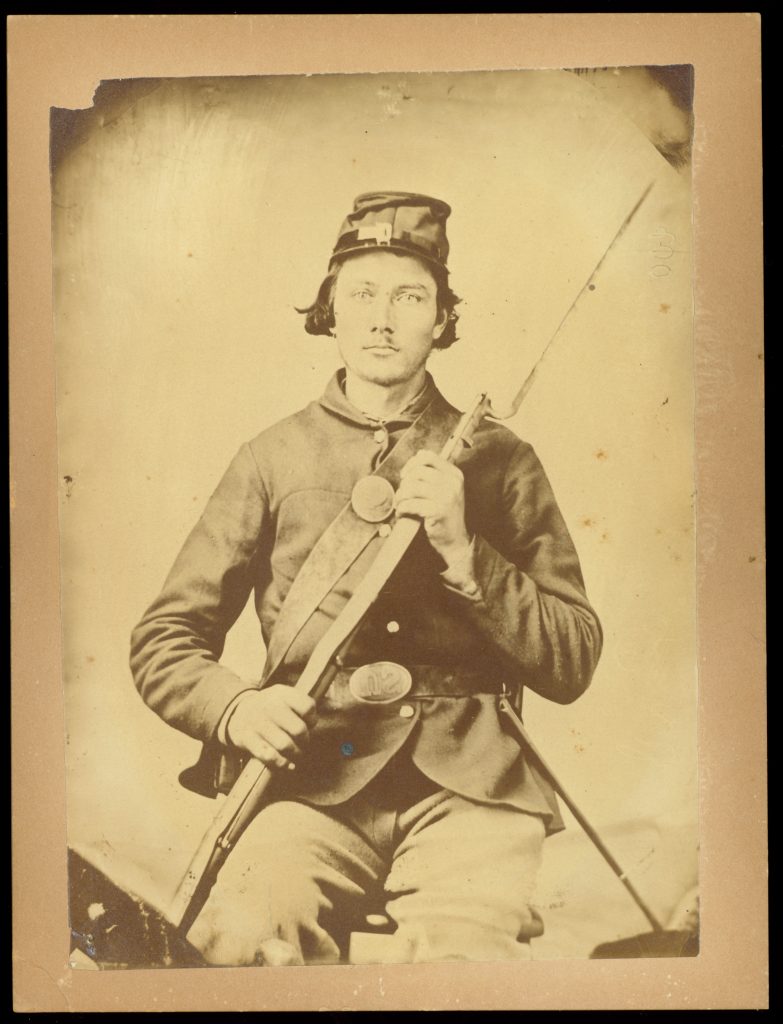
The war spurred the development of a thriving photographic portrait industry in cities and towns throughout the North. Hundreds of thousands of soldiers had portraits made as mementos for those they left behind. The photograph above portrays Private George Deal whose letter to his wife, Sarah, appears in the preceding section. The negative was printed backwards; the U.S. on Deal’s uniform appears in reverse. Deal was killed at the Battle of Atlanta in 1864.
Coming Home
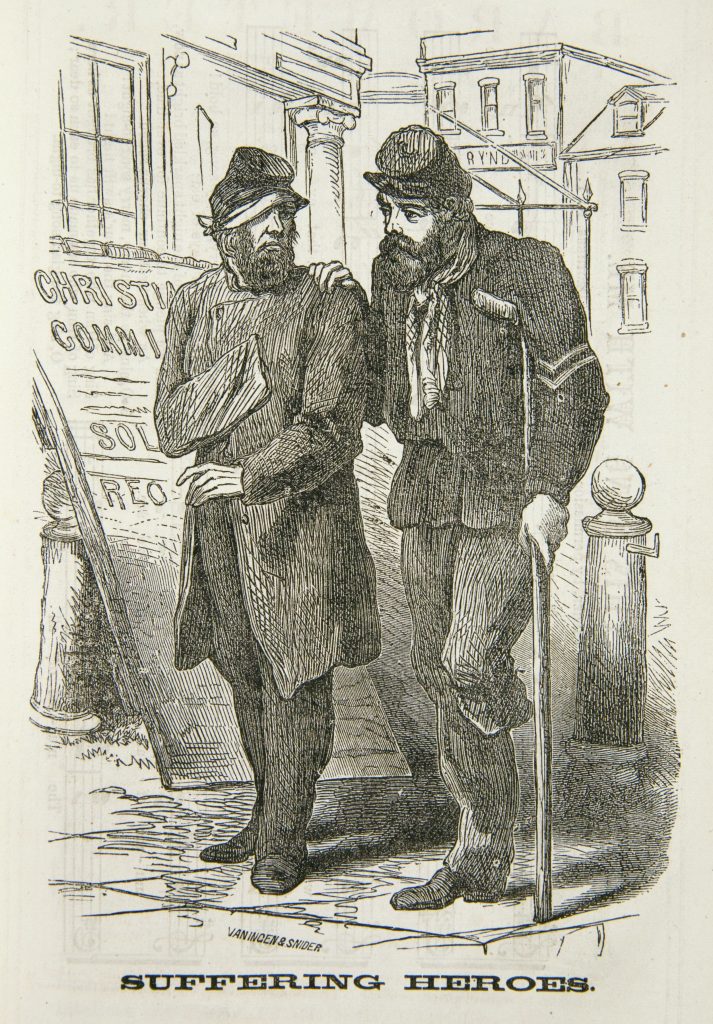

After the war’s end, many women and children at home adjusted either to the loss or to the return of their husbands, fathers, sons, and brothers with serious wounds or trauma. Soldiers returned home missing legs or arms or eyes. Depictions of the end of the war celebrated soldiers’ homecomings, but often did so in a way that communicated profound loss, evoking the soldiers who would not return home or the permanent scars of those who did. The images above appeared in popular periodicals during and just after the war’s final months.
Selected Sources
- Brownlee, Peter John and Daniel Greene, curators. Home Front: Daily Life in the Civil War North. Exhibition co-organized by the Newberry Library and the Terra Foundation for American Art. 2013.
- Burns, Sarah and Daniel Greene. “The Home at War, the War at Home: The Visual Culture of the Northern Home Front” in Home Front: Daily Life in the Civil War North (Chicago: University of Chicago Press, 2013). 1–11.
- Burns, Sarah and Daniel Greene. “The Toys of War.” New York Times (February 27, 2014). http://opinionator.blogs.nytimes.com.
- Goodheart, Adam. “Foreward: Picturing War” in Home Front: Daily Life in the Civil War North (Chicago: University of Chicago Press, 2013). xv-xx.
- Gugliotta, Guy. “New Estimate Raises Civil War Death Toll.” New York Times (April 2, 2012).
- Terra Foundation for American Art. The Civil War in Art: Teaching and Learning through Chicago Collections. 2012.
By Dr. Hana Layson
Manager of School and Educator Programs
Portland Art Museum
By Dr. Daniel Greene
Adjunct Professor of History
Northwestern University
